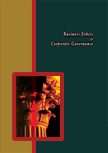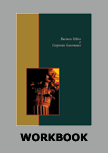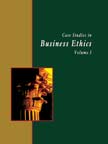Fall of Arthur Andersen




|
|
ICMR HOME | Case Studies Collection
Case Details:
Case Code : BECG027
Case Length : 15 Pages
Period : 1997 - 2002
Pub. Date : 2002
Teaching Note :Not Available
Organization : Arthur Anderson, US DOJ
Industry : Financial Services
Countries : USA
To download Fall of Arthur Andersen case study (Case Code:
BECG027) click on the button below, and select the case from the list of available cases:

Price:
For delivery in electronic format: Rs. 400 ;
For delivery through courier (within India): Rs. 400 + Rs. 25 for Shipping & Handling Charges
»
Business Ethics Case Studies
» Case Studies Collection
» ICMR Home
» Short Case Studies
» View Detailed Pricing Info
» How To Order This Case
» Business Case Studies
» Case Studies by Area
» Case Studies by Industry
» Case Studies by Company

Please note:
This case study was compiled from published sources, and is intended to be used as a basis for class discussion. It is not intended to illustrate either effective or ineffective handling of a management situation. Nor is it a primary information source.
|
|
<< Previous
Background Note
Arthur Andersen (Arthur) and Clarence Delaney founded Andersen in Chicago, in 1913. The firm was initially named Andersen, Delaney & Co., and was engaged in offering accounting services to companies. Andersen was essentially a partnership firm, with all the chief auditors having a share in the firm. The firm changed its name to Arthur Andersen (Andersen) in 1918.
|
Arthur gave a lot of importance to ethical values and insisted on honest accounting and the elimination of conflicts of interest in accounting the firms. During the late 1920s, because of the depression in the US economy, many investors lost faith in companies.
Reportedly, Andersen, under the leadership and guidance of Arthur, was instrumental in restoring the faith of US investors in companies based on its integrity and high professional values. Arthur also focused on creating a firm with its own set of business standards. His emphasis on 'Arthur Andersen specific' business standards evolved into the concept of 'One Firm' over the years.
|
|
This concept ensured that all Arthur Andersen clients across the world received the same quality of work, the same kind of approach to work, and the same caliber people trained in the same way.
|
|
Such consistency in offering services and quality was achieved by imparting rigorous training to all new recruits. The training sought to help new recruits imbibe the Arthur Andersen culture, popularly known as the 'Andersen Way.' After Arthur's death in 1947, Leonard Spacek (Spacek), a partner in the firm, became the CEO. By the early 1950s, the culture of ethics and honesty was so deeply ingrained in the firm that the firm was elected to the Accounting Hall of Fame of Ohio State University in 1953. In the early 1950s, realizing the potential of technology, especially computer technology, Andersen began investing in the same. By the mid-1950s, Andersen was offering consultation and installation services through its new Administrative Services Division... |
Excerpts >>
|
|





